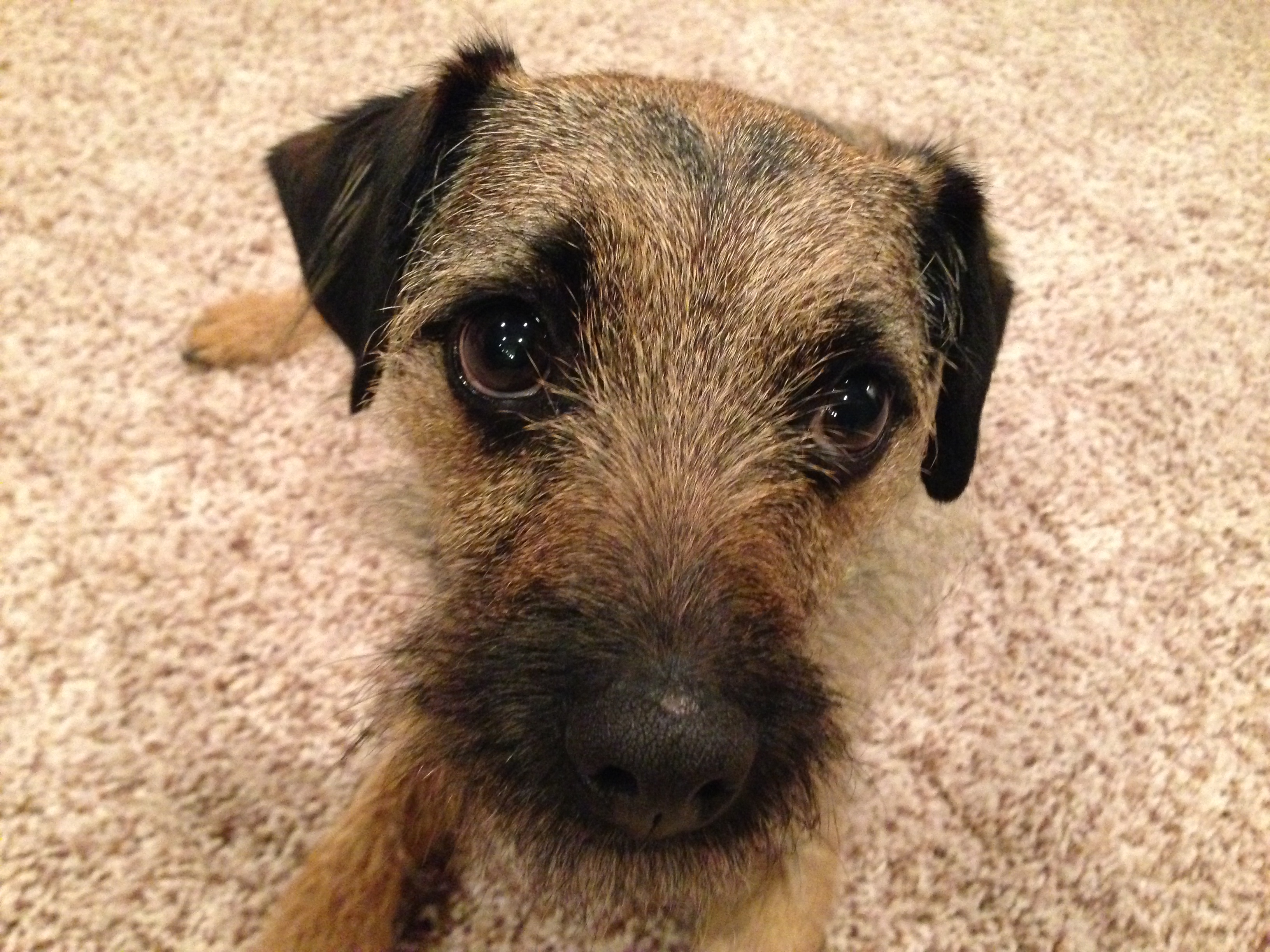Teaching Max to Respect the Authority of All the Members of His Family
By: David Codr
Published Date: February 28, 2014
Max is a one-and-a-half year old Border Terrier. His owner called me for help after Max nipped her daughter in the face when she attempted to correct Max from one of his issues; jumping up on people, counter surfing, getting over excited when people come over and some aggressive barking at other dogs.
When I arrived, i knocked at the door excessively to see what kind of reaction I would get. I could hear a tiny bit of anxiety in his barking, but the quantity and intensity was lower than i expected. Once I got inside, he had a nice balanced demeanor to him. I was expecting a dog that was starting to show aggression, but Max was anything but. And yes, Max is every bit as cute in person as he is in the photo.
We sat down and I suggested a few rules to help Max start to identify himself in a more following position. Usually a dog only disagrees or attempts to correct those it considers subordinate to it. Adding boundaries and structure are great ways to get a dog to see and respect the authority of his humans.
Next I showed the family a few exercises to practice to help Max learn that responding to commands by the members of the family can be fun and rewarding. The first exercise will help Max learn to focus and restrain himself instead of instantly reacting. Because he is so smart, Max only needed me to show him the exercise twice before he got it.
After practicing the exercise with all the members of the family, I showed them how to get Max to recall when they called him and sit next to them neatly in the heel position. While Max happily responded, it took a few minor corrections before he was running over then sitting next to his owners in a heel. Once he got it down, we moved further apart so Max had to run across the house when he was called.
Next, Max’s owner called to ask their owner to let their Australian Shepherd in their back yard so I could see Max’s reaction. Because he didn’t have a fenced in yard, we took Max out on a leash.
As soon as he saw the other dog, Max the Terrier became a Max the Terror. His hackles were up, he was barking frantically and couldn’t control himself. I took the leash and applied a few corrections the instant he barked. It took a handful of corrections but finally Max settled down. He was still in a staring contest with the neighbor’s dog who was showing some aggressive / territorial body language at the fence. To gauge his reaction, I walked Max closer to the neighbor’s dog and stopped and corrected him each time he started to show territorial aggression. I was able to get him up to the fence, but as we got closer, it became more difficult to snap him out of it.
I suggested they practice the correction techniques with Max at a distance at first. As he is able to be outside and non reactive from that distance consistently, only then should they try to approach the neighbor’s dog, a few steps at a time and over the course of several days or even weeks. We want Max to understand that his owners disagree with a hostile reaction to another dog. As he starts to see his humans as his authority figure, he will become less intense. Additionally the increased exposure to the other dog in a controlled way where he isn’t allowed to react should completely eliminate this behavior.
Max isn’t a troubled dog, but he is a pretty typical Terrier. Adding rules and structure will help define the leader / follower dynamic and increase his respect for his family’s authority, including the kids. It will take some time and practice, but it shouldn’t take long for Max to become a perfect dog.
Categorized in: Dog Behavior


